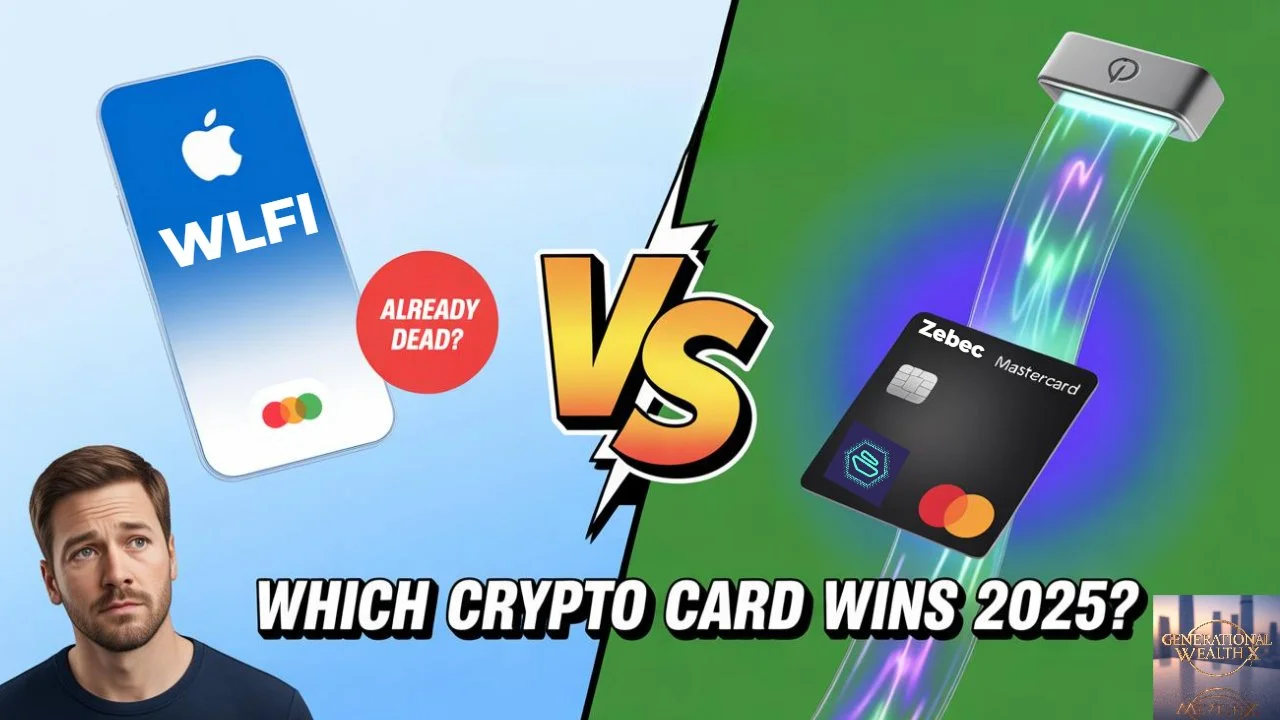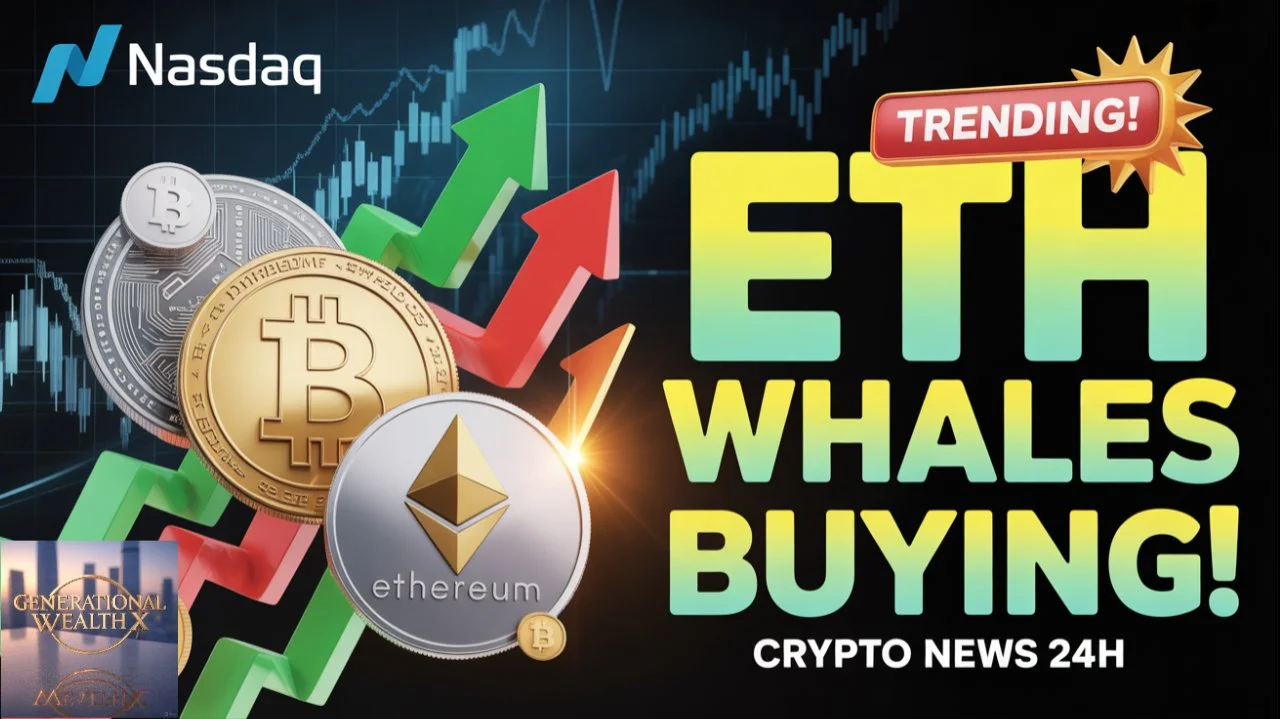Is WLFI's Crypto Card Already Obsolete Before Launch?
What if a company invested millions developing a revolutionary product, only to discover it was outdated on day one?
World Liberty Financial (WLFI) is making waves with its upcoming crypto debit card. But in the rapidly evolving cryptocurrency landscape, the technology powering your solution can determine your success or failure. While WLFI promises to bridge crypto and everyday spending with its dollar-pegged stablecoin and Apple Pay integration, another network is building an entirely different foundation for the future of digital payments.
Let's examine two competing visions for crypto payment cards—one focused on user experience, the other on revolutionary architecture—and determine which approach is truly built for longevity.
WLFI's Strategy: User Experience First
World Liberty Financial has announced a debit card for their one-dollar stablecoin, featuring seamless Apple Pay integration for effortless spending. They're developing an application described as "Venmo meets Robinhood," designed to merge simple peer-to-peer payments with cryptocurrency trading capabilities.
The Surface-Level Appeal
This approach makes strategic sense. By making crypto feel familiar and accessible, WLFI lowers the barrier to entry for mainstream adoption. However, the critical question isn't about the interface—it's about how money moves behind the scenes.
The Infrastructure Reality
WLFI has explicitly stated they will not build their own blockchain, opting instead for a "chain-agnostic" approach. This means operating on established networks like Ethereum and Solana.
The advantages:
Focus resources on user experience rather than infrastructure development
Create a bridge between decentralized finance (DeFi) and traditional commerce
Avoid the complexity of blockchain maintenance
The limitations:
Transaction speed depends entirely on host networks
Cost efficiency is constrained by underlying blockchain fees
Settlement capabilities are limited by third-party infrastructure
Technical details on achieving true decentralization remain unclear
Timeline: Pilot program launches late 2025, with full rollout planned for Q1 2026.
Zebec Network: Infrastructure-First Revolution
Zebec Network represents a fundamentally different philosophy. Rather than building another application layer, Zebec has created a payment infrastructure protocol designed specifically for next-generation finance.
Real-Time Money Streaming Explained
The core innovation is continuous value flow. Traditional finance processes payments in batches—your biweekly paycheck is a perfect example. Zebec enables second-by-second money streaming, allowing your salary to flow into your account continuously as you work.
Real-World Implementation
Zebec has already launched crypto debit cards in partnership with Mastercard. Unlike solutions that simply connect to existing systems, Zebec's entire architecture is purpose-built for instant, continuous settlement.
Head-to-Head Comparison
Transaction Speed ⚡
WLFI: Offers crypto spending through familiar interfaces, but speed is constrained by host blockchain capabilities.
Zebec: Built originally on Solana for maximum throughput, enabling genuine real-time, per-second payments that eliminate traditional settlement delays.
Cost Efficiency 💰
WLFI: Fee structure depends on underlying blockchain networks and intermediary costs.
Zebec: Streamlined on-chain protocol designed for efficiency. Their Zebec Carbon card launched as a zero-fee card.
Functionality & Innovation 🚀
WLFI: Focuses on exceptional user experience for spending and trading within familiar paradigms.
Zebec: Enables "programmable money"—complex, automated payment flows that unlock next-generation financial applications far beyond simple transactions.
Proof of Concept: Real-World Validation
Zebec isn't just theoretical innovation—they're proving their model with substantial partnerships.
The Asure Partnership
Zebec has established a joint venture with Asure, a major Human Capital Management software provider that processes over $10 billion in annual payroll for millions of U.S. employees. This partnership aims to stream payments to thousands of employees, integrating directly into the traditional economy and upgrading it from within.
Why This Matters
When a NASDAQ-listed company like Asure validates your technology, it demonstrates your infrastructure is ready for mainstream adoption. For end users, this means getting paid by the second and instantly spending that money anywhere Mastercard is accepted—a fundamental shift from current financial systems.
The Verdict: Obsolete or Just Different?
Is WLFI's crypto card obsolete before launch? "Obsolete" may be too harsh. The familiar app experience and Apple Pay integration will definitely attract users seeking a simple on-ramp to crypto spending.
However, WLFI's model faces significant challenges from more technologically advanced solutions. The future of payments isn't merely about making crypto spending easier—it's about fundamentally transforming how value moves.
Two Distinct Visions
WLFI is building a user-friendly bridge to existing systems—evolutionary improvement.
Zebec is constructing an entirely new highway—revolutionary transformation.
Networks like Zebec are pioneering real-time, continuous-flow payments that could redefine financial infrastructure. While both approaches have merit, the question becomes: which foundation will support the next decade of financial innovation?
Your Perspective Matters
What do you believe is more critical for mass adoption?
A seamless, "Venmo-like" experience that makes crypto accessible today?
Advanced payment infrastructure that enables entirely new financial possibilities?
Join the conversation by subscribing to our newsletter at
for deeper analysis of the technologies shaping tomorrow's financial landscape.
Disclaimer: This content is for educational purposes only and does not constitute financial advice. I am not a licensed financial advisor. Cryptocurrency investments are highly volatile—never invest more than you can afford to lose. Always conduct thorough research before making investment decisions.
Bitcoin at $111K, Ethereum Whales Buying: Top Crypto Trends & Breaking News (September 2025)
Quick disclaimer: I’m not a licensed financial advisor. This is for educational purposes only. Crypto is volatile—never invest more than you can afford to lose, do your own research!
The Last 24 Hours: Volatility = Opportunity
The crypto market is a rollercoaster—just the way we like it. Bitcoin is holding steady at $111,000 after a quick dip to $109,000. Analysts are eyeing $93,000 as a possible test if support breaks, but dip buyers have come in strong, showing real conviction.
Ethereum isn’t sitting still either. Whales have increased their holdings by 14% over the last five months, with ETF inflows hitting all-time highs. The $4,500 target is in sight if momentum continues.
Institutional adoption is heating up:
US Bancorp has restarted Bitcoin custody for investment managers, signaling more mainstream acceptance.
Solana’s treasury at DeFi Development now holds over 2 million SOL, worth hundreds of millions after a major buy-up.
Trump-linked American Bitcoin stock soared 60% on its Nasdaq debut, aiming for a $2.1 billion share sale.
On the regulatory front, the SEC is delaying decisions on spot SUI ETFs, while Nasdaq is cracking down on companies raising funds for crypto treasuries. The global crypto market cap is now at $3.5 trillion—volatility is creating real opportunities for generational wealth builders.
What’s Trending Now: Coins, Tech, and Security
The crypto conversation is on fire across social platforms. Here’s what’s buzzing right now:
WLFI (World Liberty Financial): Massive whale buys at $0.18 hint at explosive potential.
Other trending coins: SOMI, PIN, PUMP, ETH, ONDO, SOL, CARDS, CRO, HYPE—all driven by meme hype and AI integrations.
Zero-knowledge proofs for privacy are exploding in popularity.
AI-blockchain fusions like TAO’s decentralized AI subnets are gaining traction.
Stablecoins are rewriting payments, with Stripe’s new Tempo blockchain pushing seamless adoption.
Prediction markets and regulatory shifts (Japan’s tighter rules, ECB’s digital euro push) are sparking debates.
Security alert: North Korean hackers are targeting crypto jobs—stay vigilant!
Public companies now hold over 1 million BTC as treasury assets. This wave of institutional adoption could fuel the next bull run.
Final Thoughts: What’s Your Wealth Play?
The crypto space is moving fast. Whether you’re betting on WLFI, AI-blockchain fusions, or the next meme coin, now’s the time to stay informed and ready to act.
Which trend are you watching? Drop your thoughts in the comments, and follow Generational Wealth for daily crypto insights and strategies.
Stay stacking, stay smart, and keep building that generational wealth!



